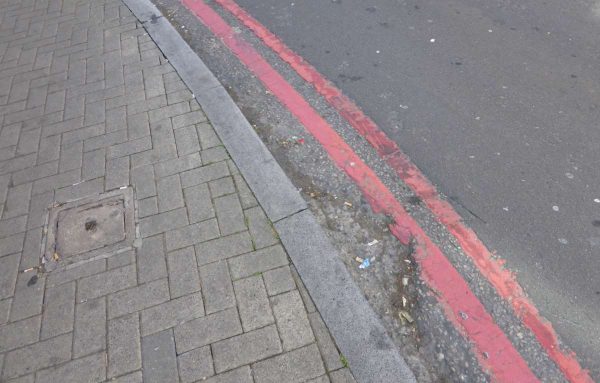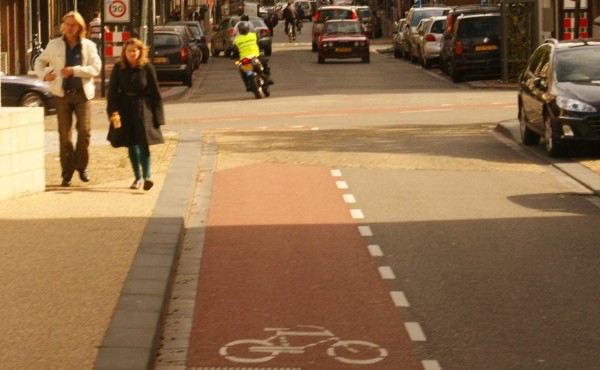Motorbikes can make better progress through traffic by using lanes that other vehicles can’t access. Here are the lanes motorcycle riders can use, and when.
Bus lanes
While many roading authorities know that motorbikes ease congestion there’s no blanket rule as to whether a motorbike can use a bus lane or not. It’s not possible for a biker to assume, they must look at the blue signs at intersections.

Buses and bikes are allowed, but not motorbikes in this lane unless it’s outside of the operating hours
Motorbikes can always use bus lanes outside their normal operating hours (as can any vehicle). In the image above, the bus lane is in operation from 7-10am and 4-6:30pm. Therefore at 8pm, 10:01am, 3am and 2pm, any vehicle could be using this lane. Often, drivers don’t realise and will avoid bus lanes at all times which simply increases congestion. Motorcyclists might find a freer, safer route within the virtually empty bus lane.
Red routes
In London, motorcyclists can use most of the Red Routes (indicated by single or double red lines), but not all of them – motorcyclists still must check at every junction.

Motorcyclists can only use some Red Routes
High occupancy vehicle lanes
Motorbikes can use HOV lanes. These are reserved for vehicles with a certain number of occupants (usually 2 or more), cycles, motorbikes, buses and coaches. They sometimes restrict lorries over a certain weight.

Climbing and crawler lanes
These are lanes on steep hills designed to be used by slow vehicles. Motorbikes can use these.
Cycle lanes and pavements
Motorbikes are not permitted to use cycle lanes or pavements. They can cross them to enter or exit a side road or driveway.

Cycle lanes are off-limits to motorbike riders. In this image the cycle lane ends at the intersection so the motorcyclist in the distance is not within it
Motorways
Motorbikes must not use the hard shoulder unless it’s designated a lane on a smart motorway. Motorbikes can lane split or filter through very slow or stationary traffic. Motorbikes can use ordinary lanes unless they are closed.
Improving access for motorbikes
England would benefit from having a national motorbike policy on lane use, such as those in Australia or New Zealand which have bus-only lanes (only for buses) and bus lanes (for buses, scooters, motorbikes, bicycles and [in Australia] taxis.) Standardising the rules would eliminate confusion and the risk of fines.
